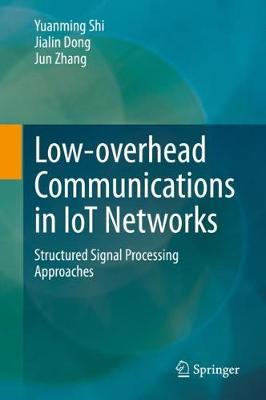The recent developments in wireless communications, networking, and embedded systems have driven various innovative Internet of Things (IoT) applications, e.g., smart cities, mobile healthcare, autonomous driving and drones. A common feature of these applications is the stringent requirements for low-latency communications. Considering the typical small payload size of IoT applications, it is of critical importance to reduce the size of the overhead message, e.g., identification information, pilot symbols for channel estimation, and control data. Such low-overhead communications also help to improve the energy efficiency of IoT devices. Recently, structured signal processing techniques have been introduced and developed to reduce the overheads for key design problems in IoT networks, such as channel estimation, device identification, and message decoding. By utilizing underlying system structures, including sparsity and low rank, these methods can achieve significant performance gains.
This book provides an overview of four general structured signal processing models: a sparse linear model, a blind demixing model, a sparse blind demixing model, and a shuffled linear model, and discusses their applications in enabling low-overhead communications in IoT networks. Further, it presents practical algorithms based on both convex and nonconvex optimization approaches, as well as theoretical analyses that use various mathematical tools.
- ISBN13 9789811538698
- Publish Date 18 April 2020
- Publish Status Active
- Publish Country SG
- Imprint Springer Verlag, Singapore
- Edition 1st ed. 2020
- Format Hardcover
- Pages 152
- Language English
